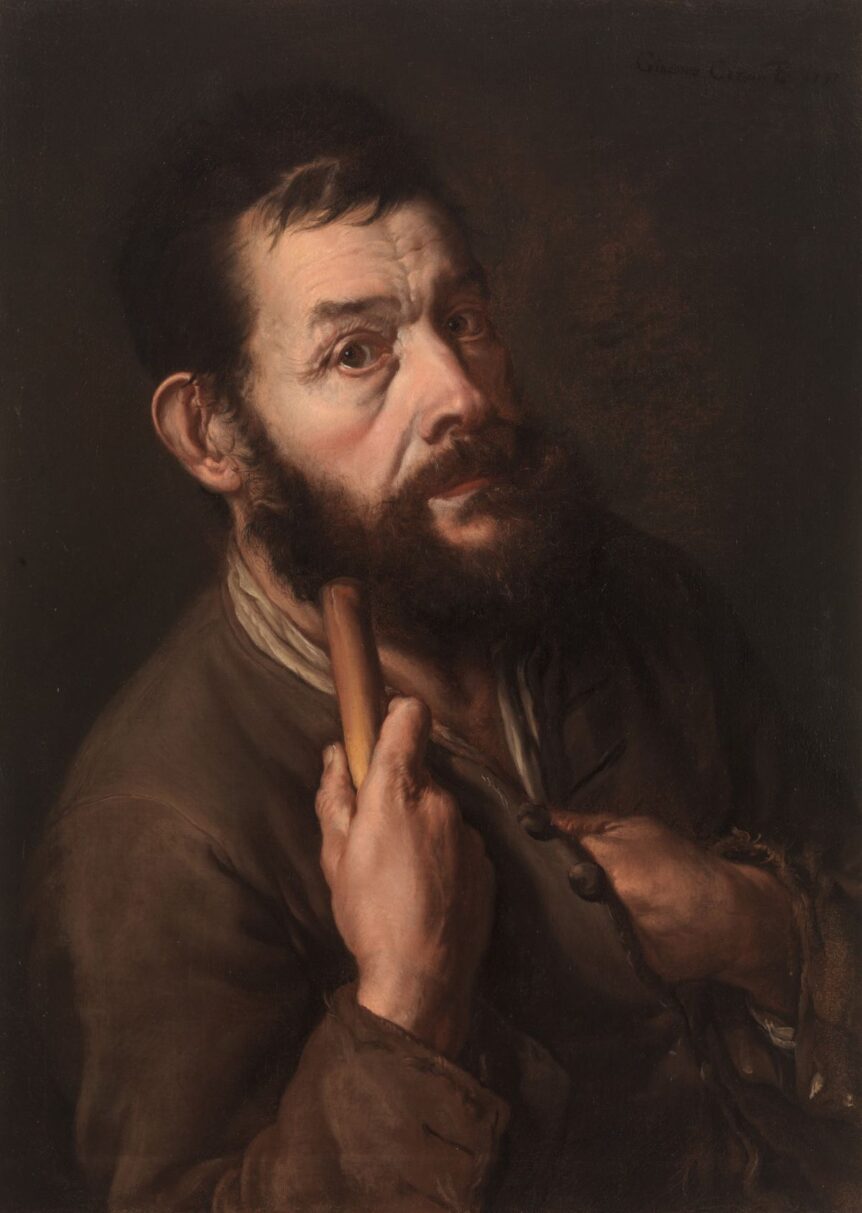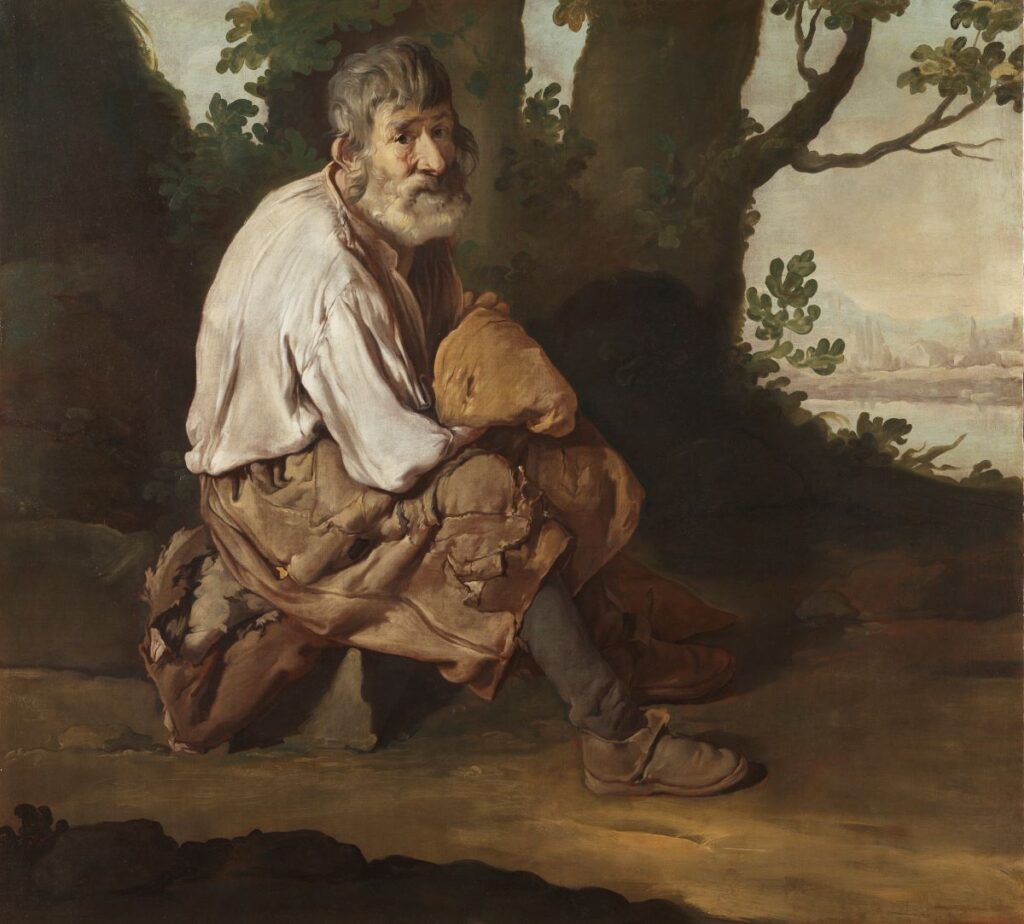
The paintings of Giacomo Ceruti, as admired in their own day as they have been neglected in ours, presented the eighteenth century with a paradox that it could not easily resolve: how was it possible that a work of art could be beautiful without depicting something that was beautiful in itself? Not having looked too deeply into the matter, most contemporaries of Ceruti—the subject of a new show at the Getty Center in Los Angeles—imagined that beautiful art began with the depiction of beautiful things. For a portrait to be beautiful, according to this theory, it should depict a beautiful woman or handsome man elegantly attired. Landscapes, by the same logic, must have sunlit vistas with lush trees and picturesque ruins, and so on. This unexamined conviction pervaded Western culture for most of its history, influencing literature and music as well.
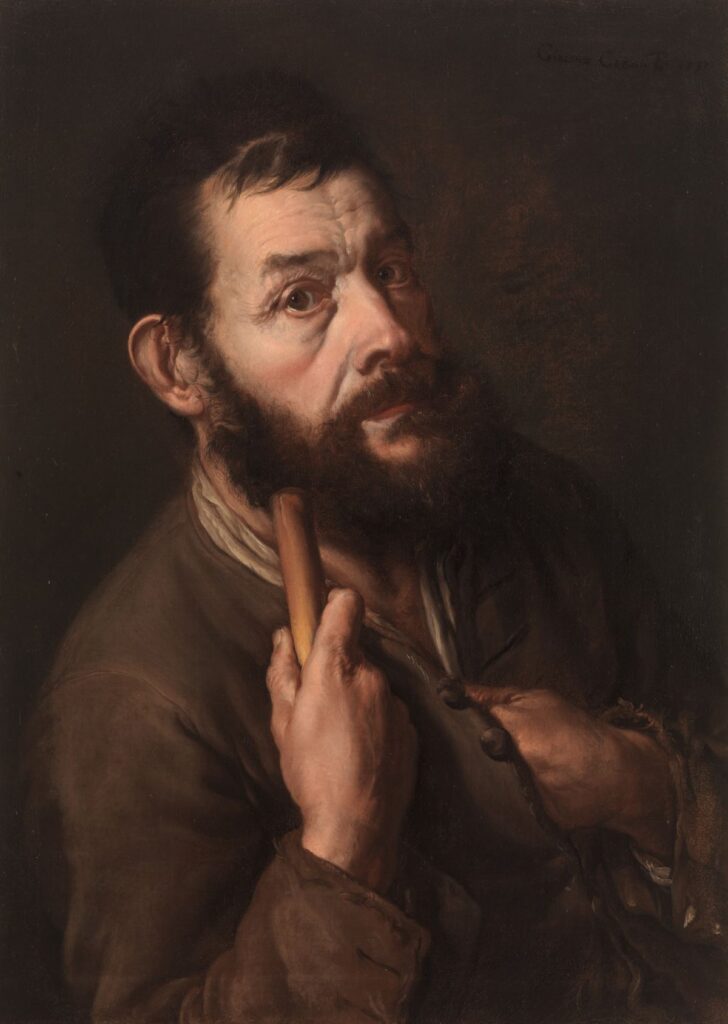
And yet anyone with any sense could see that an objectively beautiful woman was no guarantee of a portrait’s excellence and, more importantly, that some of the finest paintings depicted people and objects—Jusepe de Ribera’s street urchins, for example, or Rembrandt’s great depiction of a side of beef—that were objectively unlovely or even repulsive. Which brings us to Ceruti himself, who, as Rudolf Wittkower wrote in 1958, “left us a depressing gallery of beggars and idiots, of vagabonds, cripples, and dumb folk painted sparingly in a dark key, but with such descriptive candour that the specter of Surrealism is not far from our minds.”1
The Getty exhibition, Giacomo Ceruti: A Compassionate Eye, originated in the Museo di Santa Giulia in Brescia, Italy, and is the first American show devoted solely to the artist. It is not, however, a retrospective like the Brescian exhibition of 1987. Rather it limits itself to the so-called Padernello cycle (painted between about 1720 and 1740), thirteen of Ceruti’s finest and best known depictions of humble, even destitute figures at the margins of society. Also on view are four similar and slightly later works, including Self-Portrait as a Pilgrim (Fig. 2). Although Ceruti would go on to produce refined portraits of aristocrats and altarpieces that fully embodied the prevailing notions of beauty, the fact that he was known as Il Pitocchetto, the little beggar, suggests that the images at the Getty were the ones that defined him in the eyes of his contemporaries. All of these works were painted in Brescia when the artist was about thirty years old. But although the Padernello paintings are united in theme, style, date, and provenance—the Padernello clan was one of the most affluent in eighteenth-century Brescia—there is no evidence they were intended as a self-consistent series.
Much of the power of the cycle consists precisely in how it resists easy categorization. Although the curators describe these works as genre scenes rather than portraits, that designation is problematic. If the defining difference between the two types of painting is the opposition of specificity to generality, it is hard to see how the man depicted in Seated Beggar (Fig. 1) would not be easily recognized on the evidence that Ceruti gives us. A tonal study in the grays, greens, and muddy browns that define this period of Ceruti’s career, it depicts an old man sitting on an outcropping beside a tree, with water in the distance. His pathetical expression suggests a life of hardship and adversity. What qualifies the work as a genre scene is that the sitter is not presented as a fully autonomous human being, as our equal, in a sense, but rather as a creature defined by his context and by the unenviable circumstances of his life. The same could be said for the more prominent figure in Wine Tapping (Fig. 3), who crouches before a keg, and the seven young girls busily at work in The Sewing School (Fig. 4), all of whom are as fully individuated as the seated beggar.
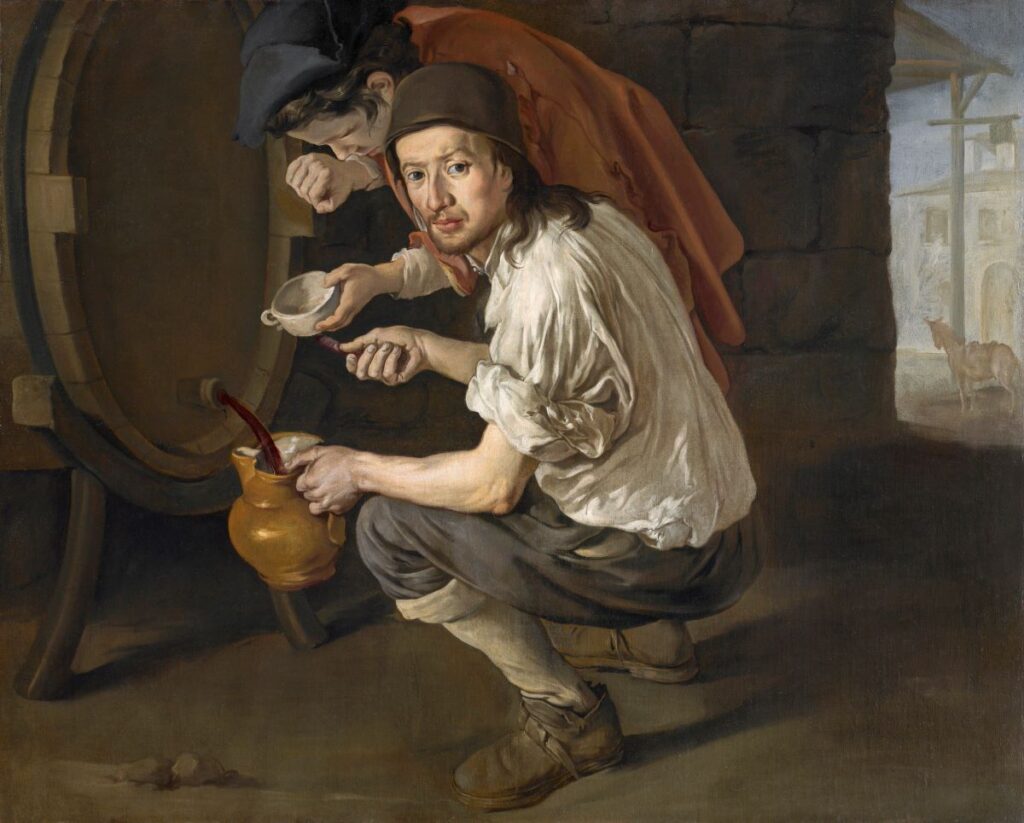
Generally speaking, portraits confront the world on terms of approximate equality. The sitter is either implicitly or explicitly admirable. Velasquez may have admitted an element of subversive honesty into the equation, but he was the exception that proved the rule. Even in the most brutal portraits of German expressionism, or later in the works of Lucian Freud and Chuck Close, what is deemed admirable or impressive to the society that produced them may have shifted, but, crucially, the element of impressiveness survives intact.
In a genre scene, however, and certainly in the Padernello cycle, the sitters submit passively to our inspection. We are looking in upon them, perhaps even looking down upon them, according to those protocols of class and status that mean only slightly less today than they did when the works were painted.
These images are largely informed by Ceruti’s origins. Born in Milan in 1698, for the bulk of his career Ceruti was based in northern Italy, and like so many northern painters, especially those from beyond the Rhine, he was suspicious of the idealism that defined the artists of central Italy. In the north, a late Gothic fealty to direct and unfiltered observation tended to prevail, together with a greater focus on the less exalted ranks of humanity. A larger shift in the attention of Western artists, however, largely began with the Emilian painter Annibale Carracci around 1580 and was then taken up by the Lombard Caravaggio, the Dutch Rembrandt, and the Frères Le Nain, from Picardy in northern France, to name only the most illustrious examples. As Roberta D’Adda and Davide Gasparotto explain in a highly informative essay in the catalogue to the Getty exhibition, by the early seventeenth century, one hundred years before Ceruti, an entire school of painters in Rome, the so-called Bamboccianti, mostly northern followers of the Dutchman Pieter van Laer, devoted themselves, often but not always in a tone of lighthearted mockery, to depicting the underclass that inhabited the streets of the capital.
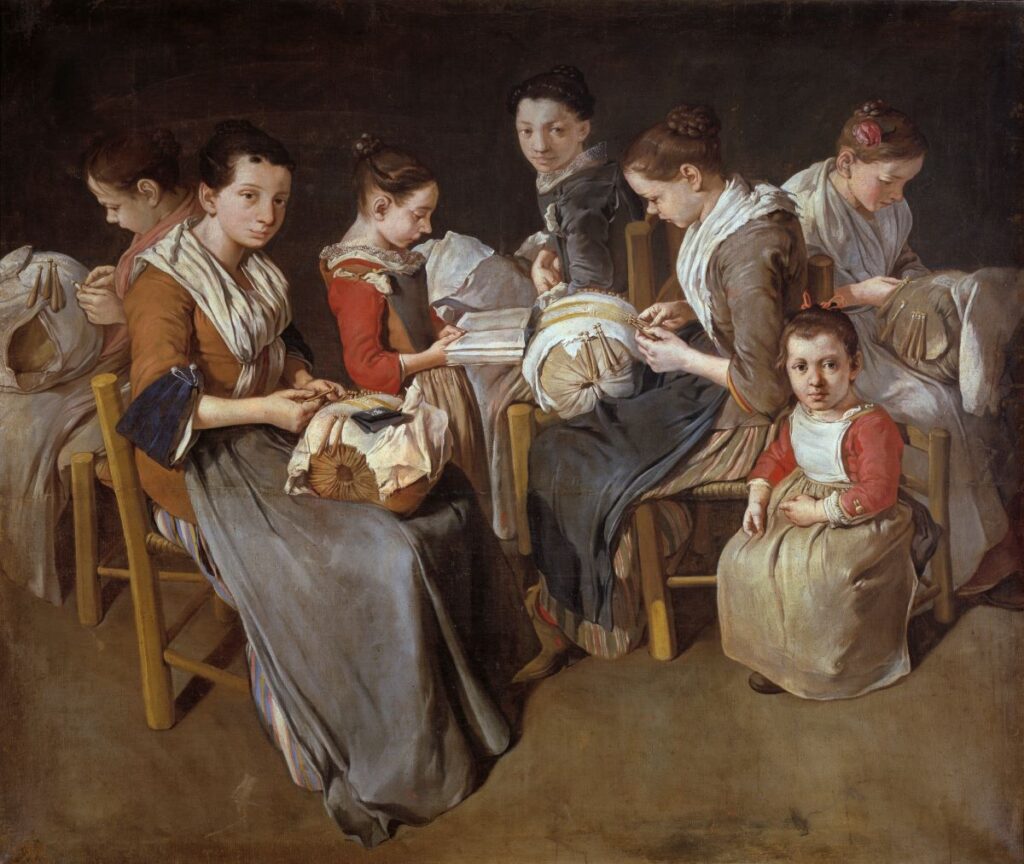
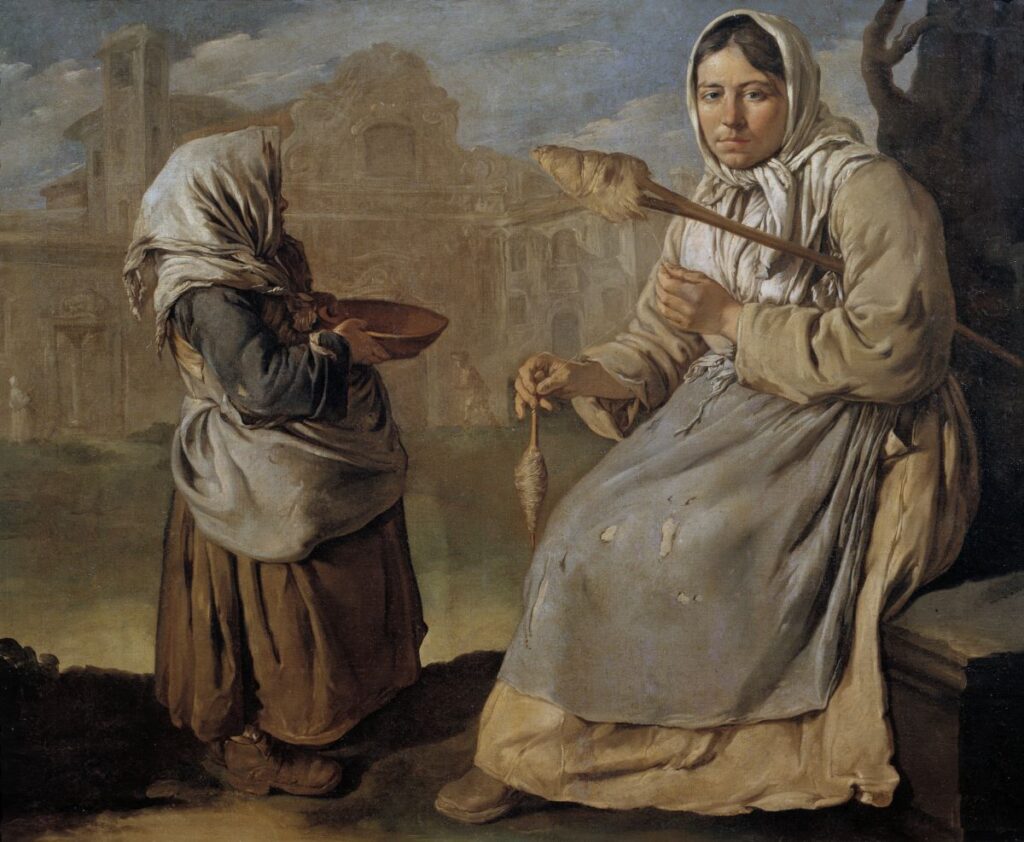
An element of hypocrisy in the depiction of this underclass was not lost on the painter and satirical poet Salvator Rosa, who complained about the patrons for such works that “Quel che odiscon vivo aman dipinto”: that which they loathe in life they love in art. He went on to say that these “works are so highly valued that they appear amid the dwellings of the great, proudly displayed in ornamental frames. Thus the beggars, naked and afflicted, receive not a farthing from [patrons] who spend their money rather on the paintings.”2
But many painters, one suspects—Georges de la Tour of Lorraine, the Dane Bernard Keil, and the Austrian Giacomo Francesco Cipper—felt true sympathy, as Rembrandt did, for the indigent, the aged and the infirm. The subtitle of the present show, “A Compassionate Eye,” seems well chosen, since Ceruti’s abounding empathy is evident in every one of the works displayed at the Getty. Fully a century before the romantic painters responded to the leveling tendencies of the French Revolution by raising the underclass to new heights, Ceruti was fully alive to the essential humanity of his sitters. Without drama or ostentation or any reference to traditional piety, he responds to these men and women and children with such spontaneous conviction that each figure is somehow monumentalized, but still essentially human.
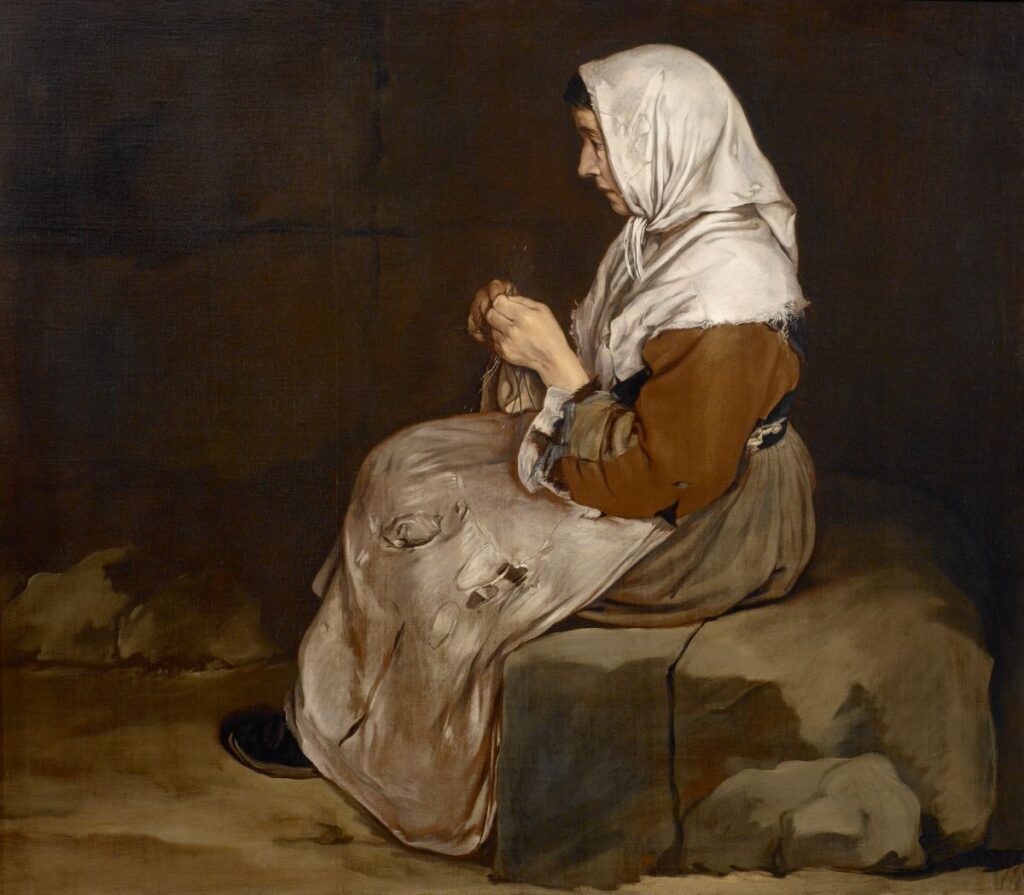
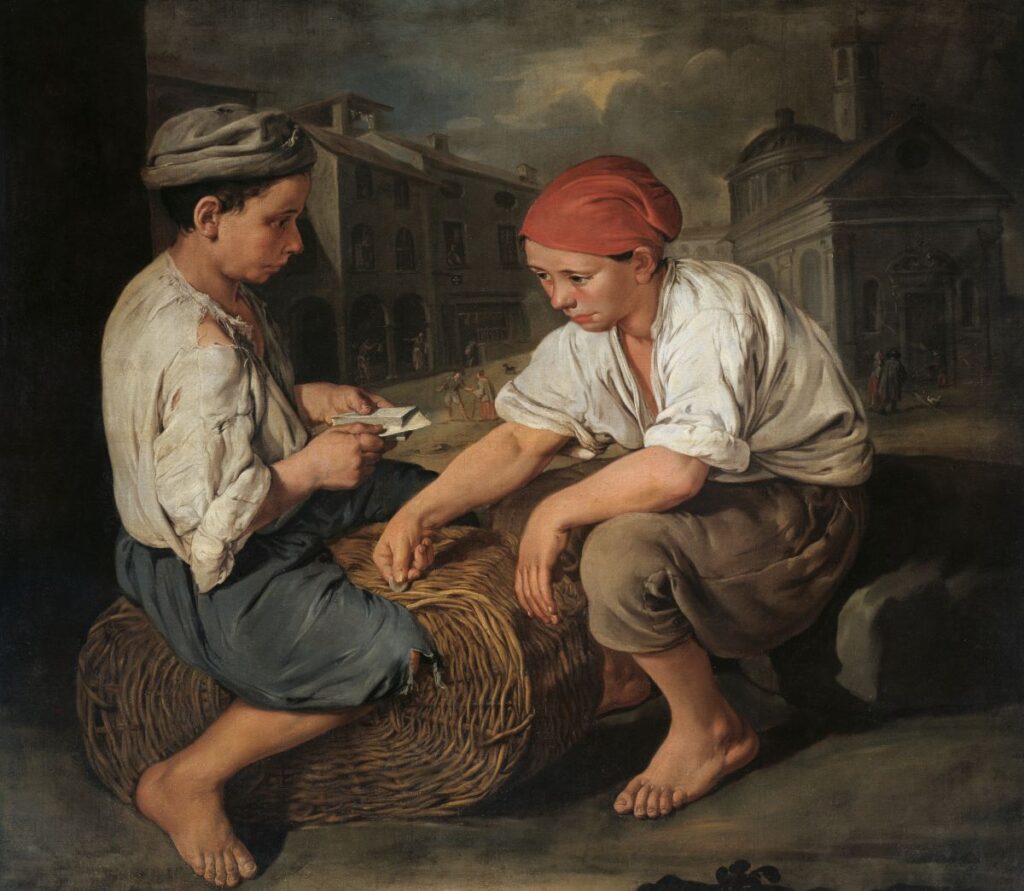
At the same time, Ceruti was an unusually gifted and original technician, and the idiom in which he worked—despite numerous parallels among his predecessors and his contemporaries—was entirely his own. The tonalist monochrome that defines the Padernello cycle is really an illusion produced by the subtlest of palettes. The apparently gray rags that cover the adult in Little Beggar Girl and Woman Spinning (Fig. 5) areformed through the proximate hues of pale yellow and puce. And then there is the strange, unforgettable presence of the child rising up, faceless, like the figment of a dream. It is hard to find anything in art prior to surrealism, as Wittkower suggested, that approximates the oddity of this apparition. But in Ceruti the result is something deeply human, as it never was among the surrealists. Whatever the ultimate source or meaning of that child, her presence in the canvas is one of the hallmarks of this master. Nothing looks quite like a work by Giacomo Ceruti except another work by his inspired hand.
Giacomo Ceruti: A Compassionate Eye is on view at the Getty Center to October 29.
1 Rudolf Wittkower, Art and Architecture in Italy 1600–1750, Pelican History of Art (Hammondsworth, UK: Penguin Books, 1958), p. 493. 2 Author’s translation of Salvator Rosa as cited in Giacomo Ceruti: A Compassionate Eye, ed. Davide Gasporotto (Los Angeles: J. Paul Getty Museum, 2023), p. 25.

